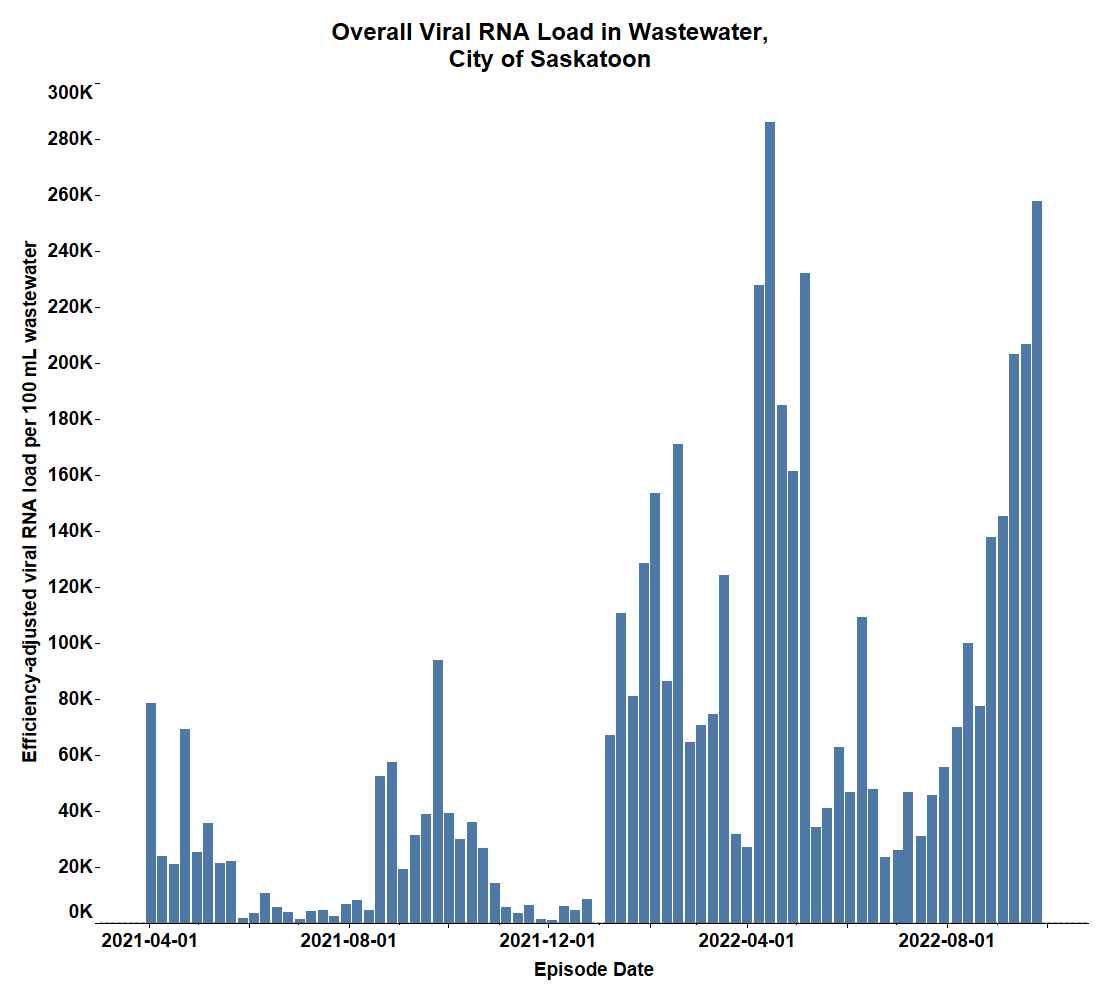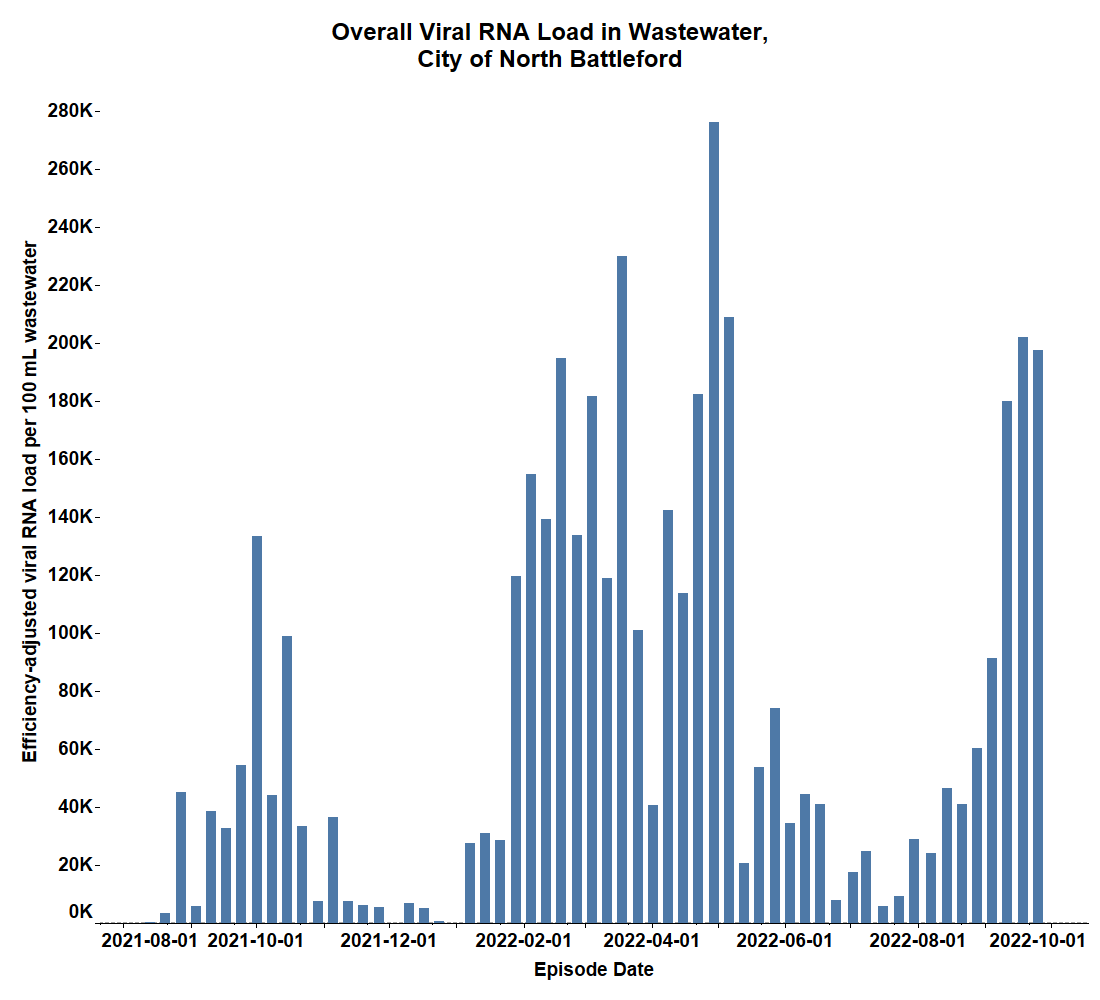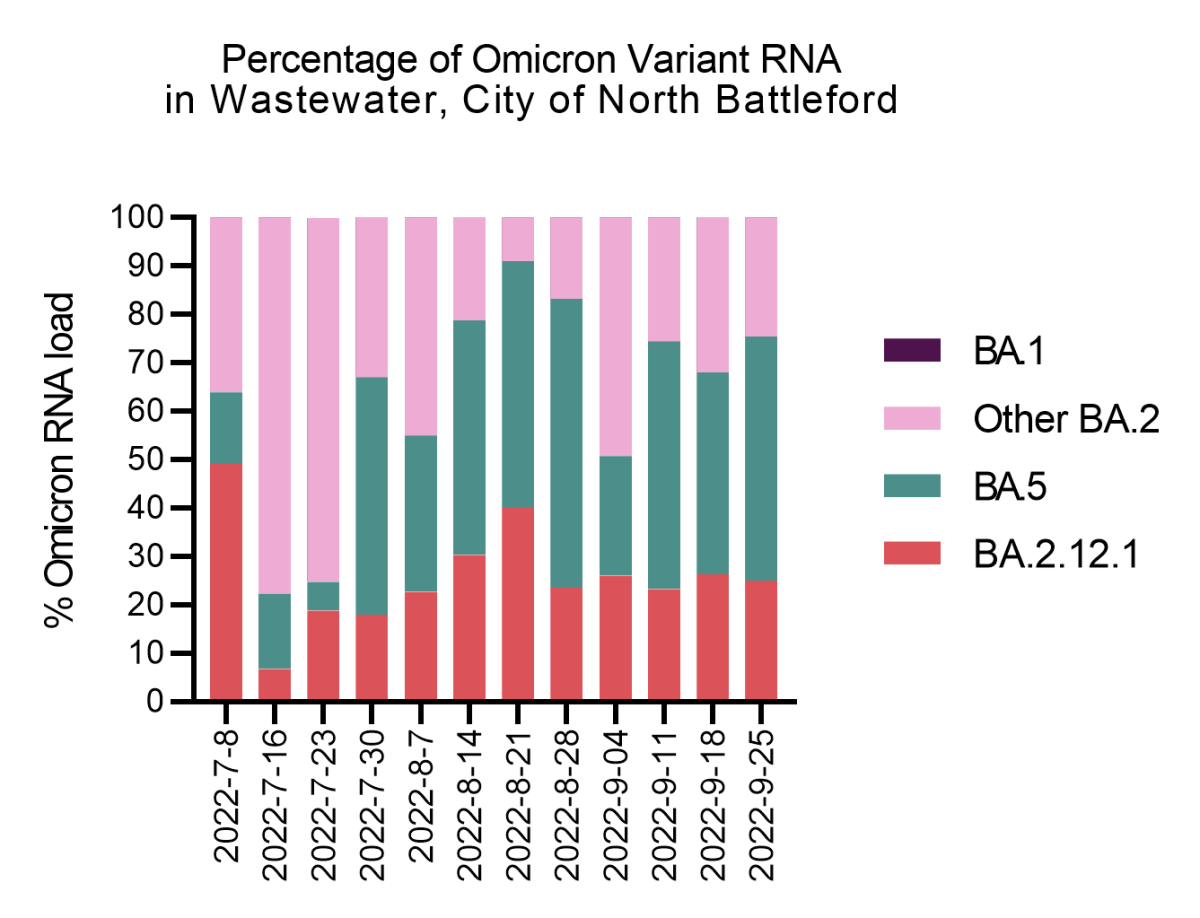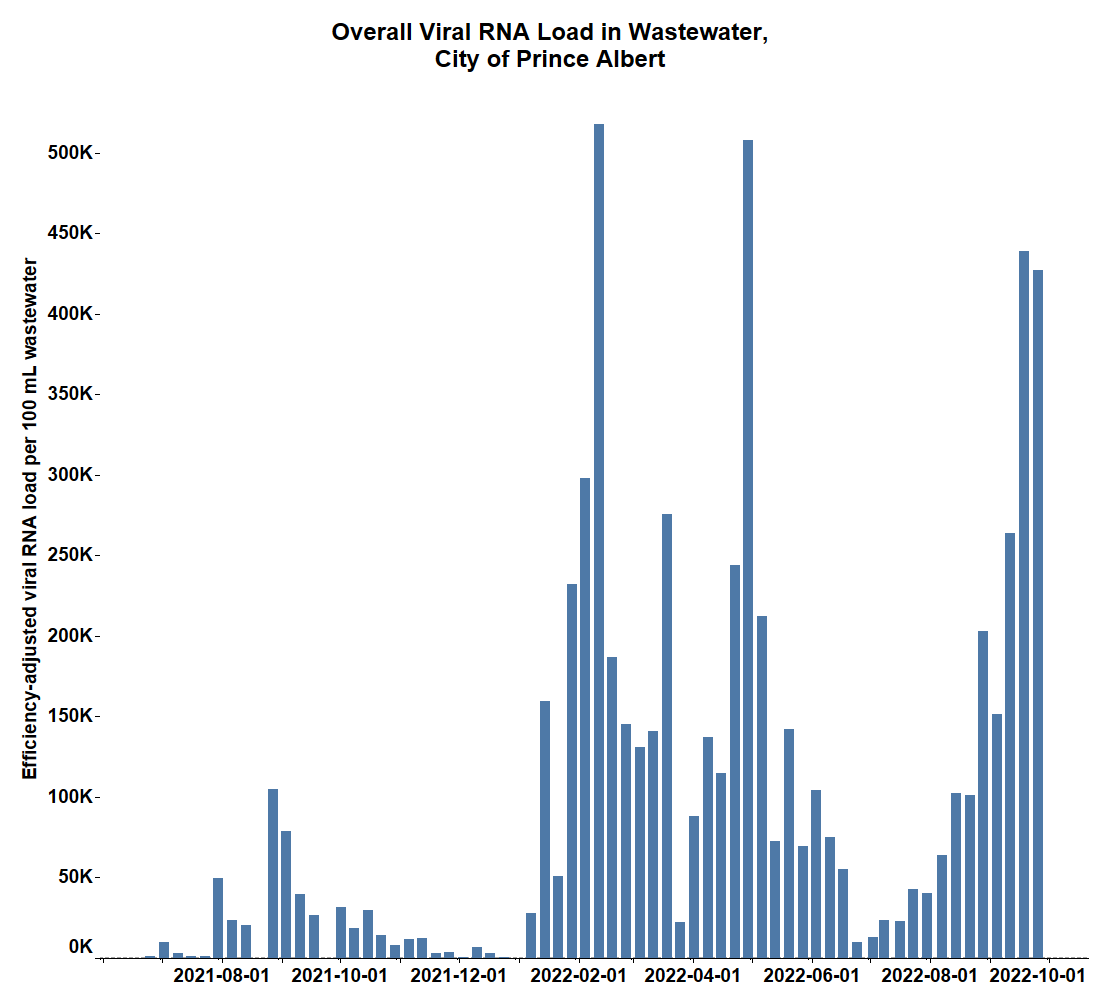The COVID-19 wastewater numbers were released for Saskatoon, Prince Albert, and North Battleford, but only one municipality saw increases in its viral load.

For the reporting period between Aug. 26 and Sept. 21, Saskatoon saw a 24.8 per cent hike in the wastewater viral load, making it the second highest its ever been observed to date.
The BA.5 variant made up the bulk of the RNA load detected with 47.4 per cent.
BA.2.12.1 made up 26.5 per cent of the viral load, and other BA.2 variants made up the remaining 26.1 per cent.
The University of Saskatchewan and Global Water Futures researchers noted that none of the RNA load detected in the wastewater was attributed to non-Omicron variants.
North Battleford saw a slight dip in the viral load for the reporting period of Aug. 21 to Sept. 16, with a 2.3 per cent drop.

Get weekly health news
It was noted that this is their fifth highest concentration observed during the pandemic.
The proportion of the RNA load for BA.5 increased by 8.7 per cent, making up 50.5 per cent of the total virus load for the municipality.
BA.2.12.1 made up 25 per cent, and other BA.2 variants were found in the remaining 24.5 per cent.
The virus load for Prince Albert also saw a drop, dipping down 2.7 per cent for the Aug. 24 to Sept. 19 reporting period.
This is the fourth highest number observed according to the report.

The report also noted these slight drops indicate that the number of infections remained the same.
BA.5 made up the smallest proportion of the RNA load, with only 3.3 per cent.
The BA2.12.1 variant made up 25.7 per cent of the virus load found, and the remaining 71 per cent was attributed to other BA.2 variants.










Comments